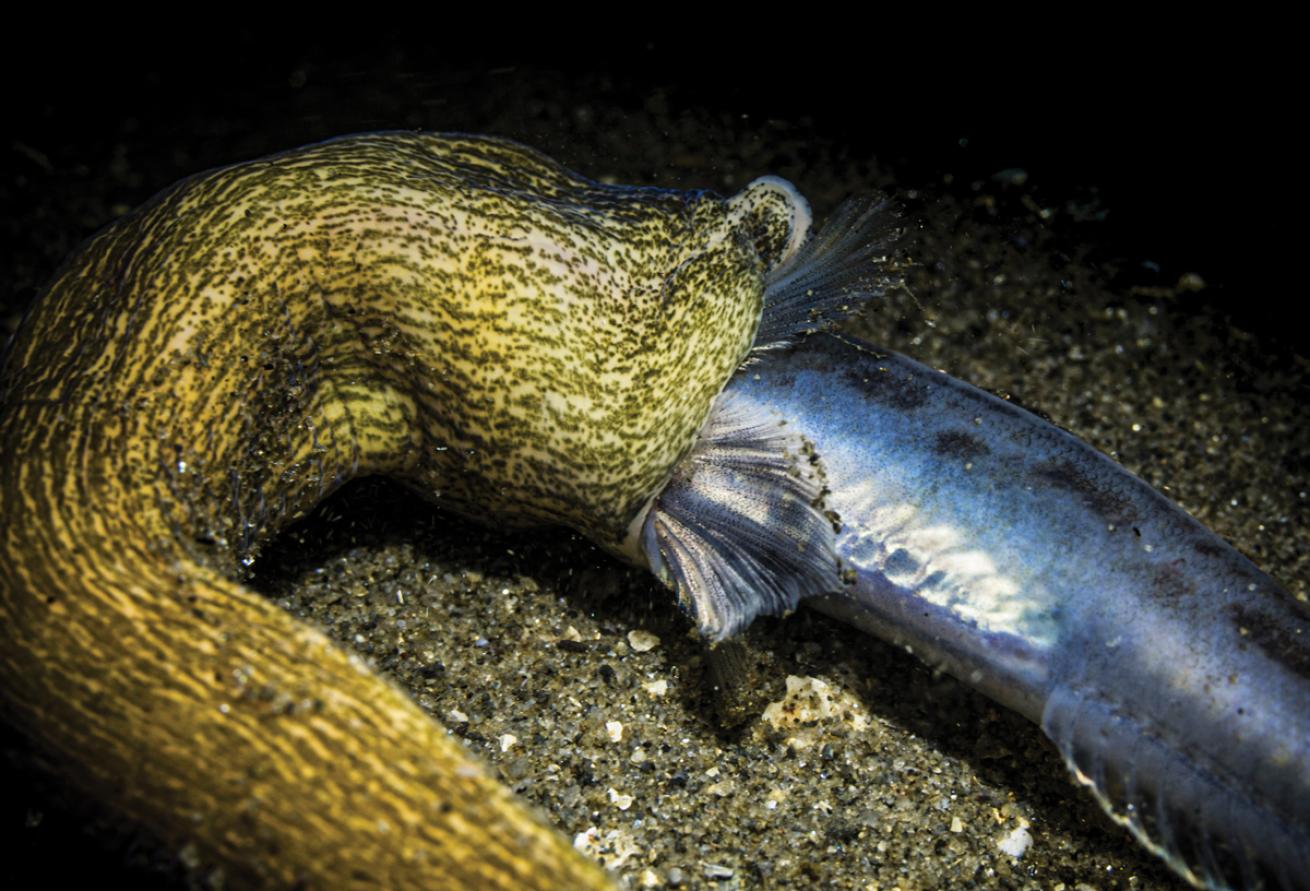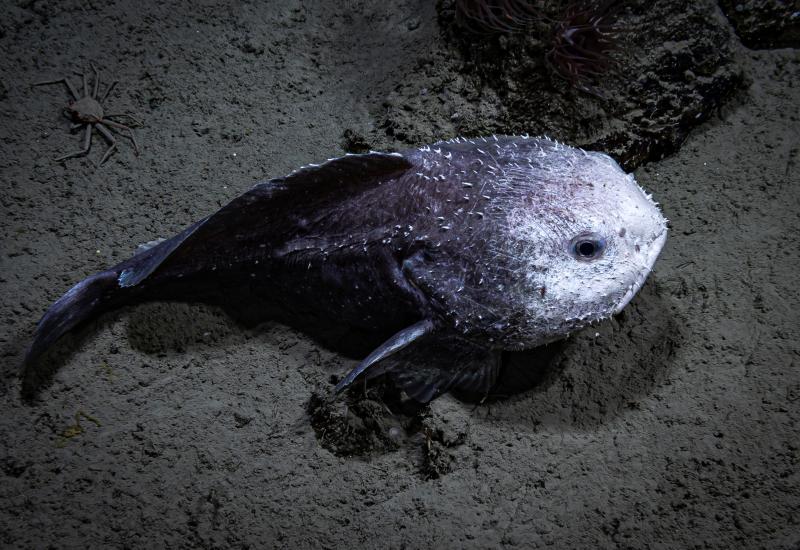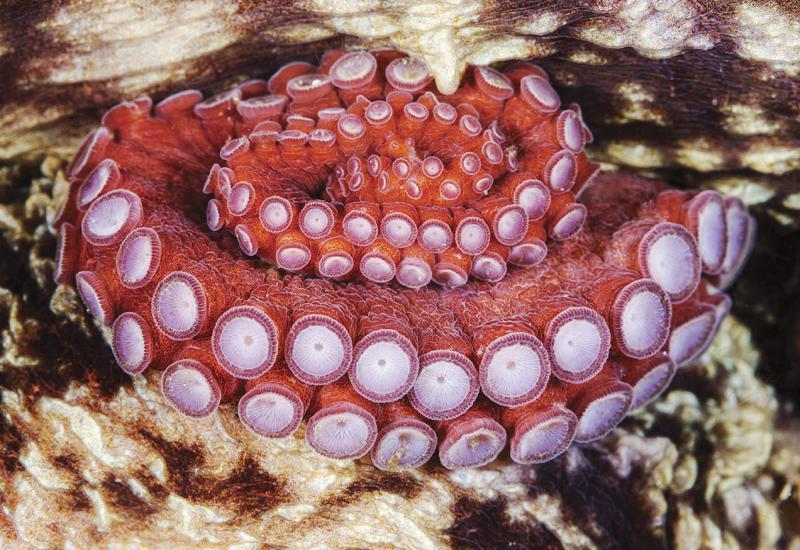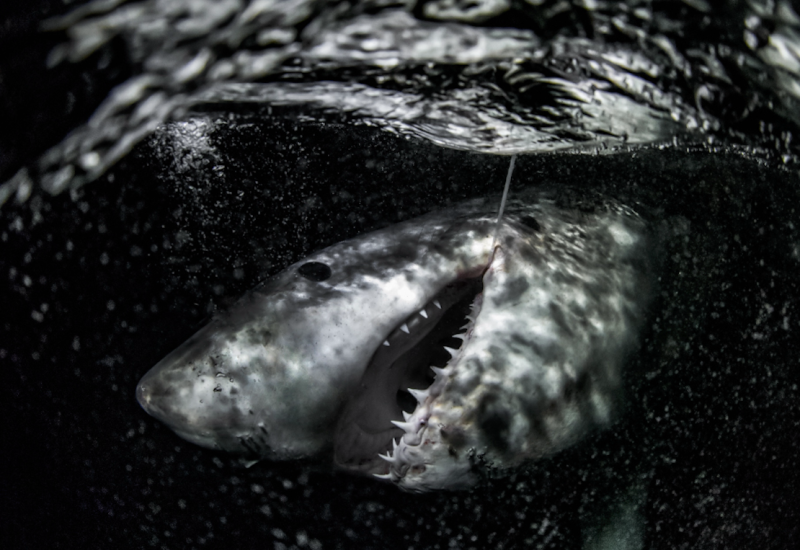The Hunt of the Ribbon Worm

Patrick WebsterA Cerebratulus lineolatus ribbon worm swallows a bay goby whole.
It’s 6 p.m. and the light is fading fast, crisp fall air giving way to the fresh chill of a crepuscular dive that envelops my buddy Phil and me. We’re on a critter hunt near a Monterey Bay jetty, macro lenses at the ready to photograph our expected nudibranchs, a colorful shrimp or two, maybe even an octopus if we’re lucky.
It’s that particular kind of dark that many an evening diver has experienced, where the sun is doing just enough to cancel out your lights and very little else. A very specific spooky, broken suddenly by a startling flash of light wriggling back at us as we near the murky muck bottom.
“Whoa—what in the jiggly wiggly?”
There’s a struggle. A faint fishy outline writhes its way a few inches off the bottom before being wrested forcibly back to the sand. The first thought is a fishing lure cast from the pier above, some anxious angler seeing our bubbles and lights as an opportunity to hook a couple big ones.
Cameras turn on, strobes are readied, lights boosted to max power just in case.
The fish thrashes again, pinned against the seafloor this time, finning up a cloud of silt as we approach. It’s a bay goby, a 3-inch-long sand-colored fish that tries very hard to be overlooked. But this one was found, and it’s in deep trouble.
The dust settles, the victim squirms a little bit and then not at all as a smooth, greenishyellow, pinstriped… tube of some sort crawls its way up the goby’s body, the creeping muscular monster whipping violently with the fish’s final spasms before the murderous maw disappears beneath the sand without a trace, returning the seafloor to an eerie stillness.
Related Reading: Megafauna vs. Microcritters: Which Is More Popular?
Phil and I exchange glances, eyes wide. We dive into the playback on our cameras, zooming in on our images to try to identify the predatory protagonist. Had it been on land we’d have called it a snake by how it snagged and swallowed its snack, except this one had no scales, no face— just mouth. If not a vertebrate, some kind of worm then, but that hardly narrows it down in the ocean.
We reconvene and shrug. We’d investigate the horror we’d just witnessed back in the parking lot. Swimming toward the reef, my eyes dart warily back and forth in the narrow beam of my focus light. Distracted photos of slugs ensue, a few cool shrimps, no octopus…
Whoosh!
A fish launches into the night and slams back to the muck. It’s another bay goby, crawling for help while ensnared at the waist by a familiarly formless, yellow-green, pinstriped funebrial funnel. This time the goby drags a foot or more of the assailant’s body out from its lair, revealing enough of the beast to positively ID once back on shore.
But the help to our curiosity is none for the goby—same as before, the fish writhes as the monster swallows it whole, alive, tail first this time, allowing us to watch the goby’s fearful expression disappear into the permanent night found under the seafloor.
A few days later, the frantic iNaturalist post gets a hit, then another and another—phylum Nemertea, a ribbon worm, one of 1,300 or so species of elongate beings (some presumed longer than blue whales) as dissimilar to other worms as Chordata humans are to Arthropoda crabs.
This is quite the exciting find to the exquisitely helpful ribbon-worm people, of which there are presumably not enough—Cerebratulus lineolatus, a particularly spectacular nemertean with biochemical wonders of paralyzing, cell exploding toxins in its belly. The goby would have been alive until arriving at the worm’s midsection before its untimely, if scientifically fascinating, end.
Related Reading: Why We’re Suckers for Becoming an Octopus’s Student
As it turns out, ribbon worms produce some of the world’s most potent toxins, rivaling and surpassing those of blueringed octopuses and even cobras! These hardly known creatures are potent, plentiful predators but they pose no threat to people, so the headlines are minimal. Ever since this deadly discovery, I now have a new line for those dive-bar conversations:
“Oh, you dive? Aren’t you afraid of sharks?”
“Sharks? Nah, big ol’ puppy dogs compared to… dare I say it… ribbon worms!”
Their shudder never matches mine. But somewhere, maybe even this very night, muffled screams of bay gobies echo through the darkness, a ribbon worm tied to a twisted fate.










